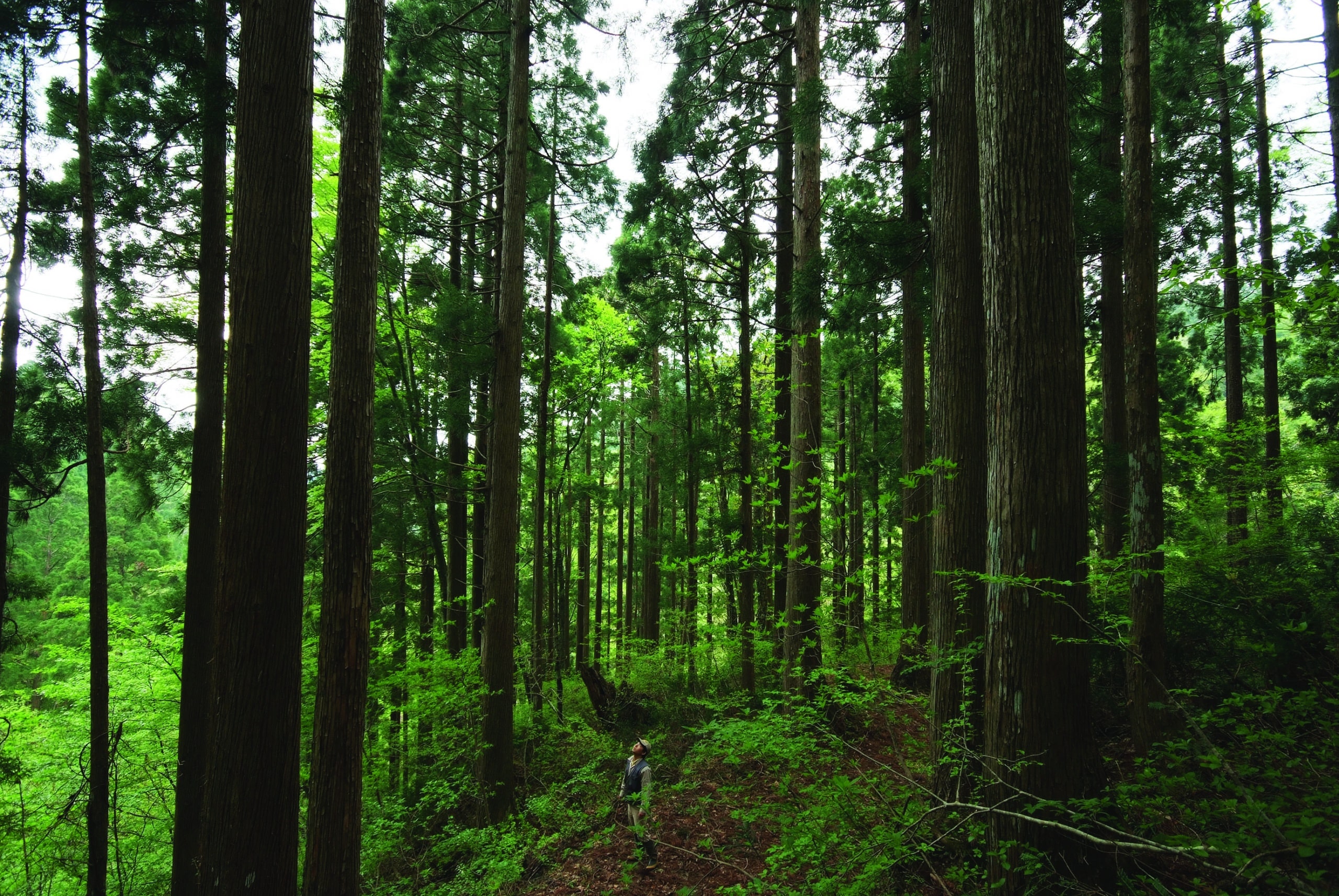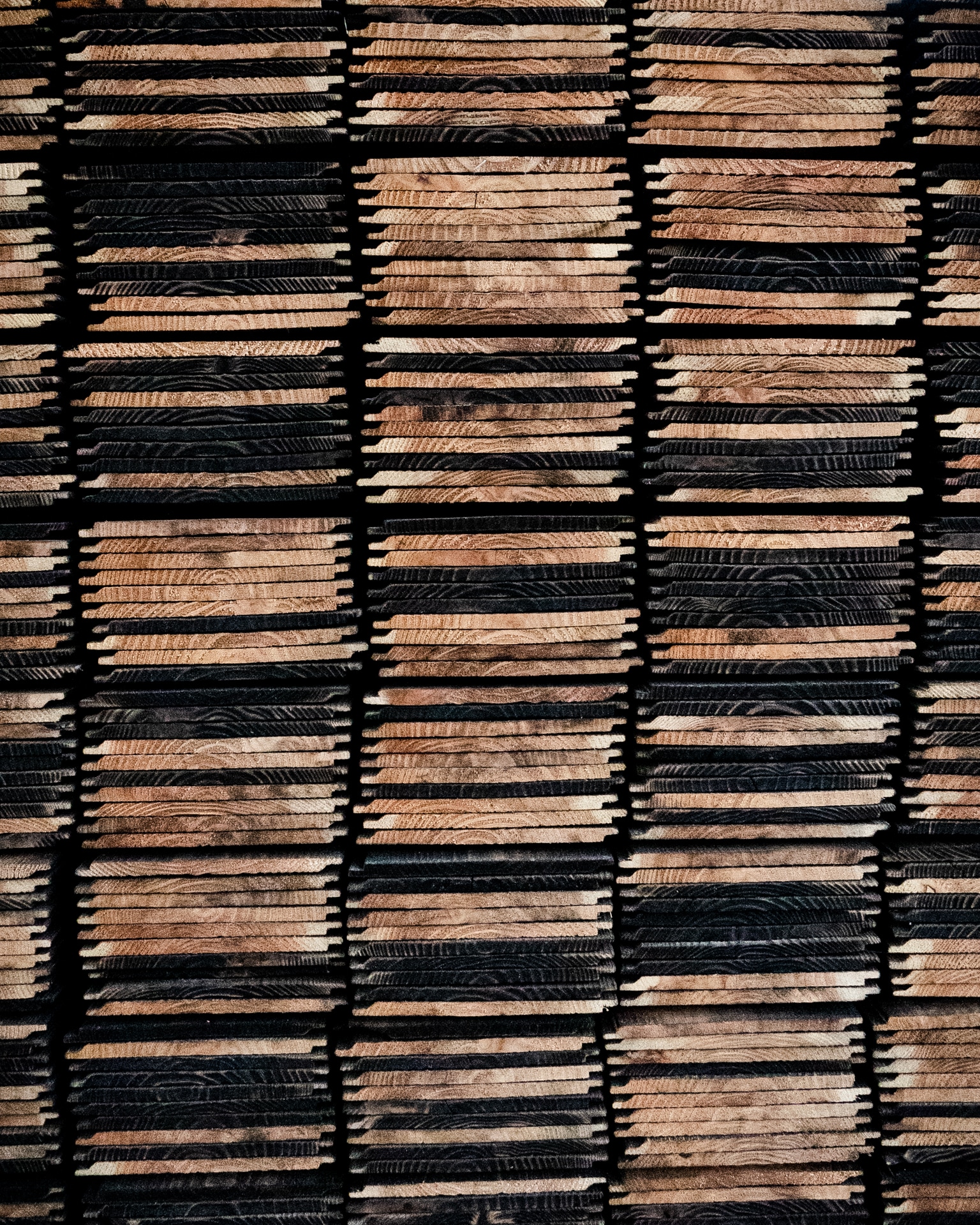Focus on Sugi – the Japanese cypress

Dinah Woltermann
A snapshot of this timber variety
At this point, you’ve probably already taken on board how crucial it is to have the right wood variety in place when producing authentic Yakisugi. No doubt you’re also aware of the abundant benefits the Japanese cypress has to offer.
So let’s deep-dive a little more into the Japanese cypress (Sugi in Japanese, with the botanical name Cryptomeria japonica) at this point:
Language | Name |
Botanical term (Latin) | Cryptomeria japonica |
German | Sicheltanne, Japanische Zypresse |
English | Japanese Cedar / Cypress |
French | Cryptoméria du Japon / Cèdre du Japon |
Japanese | Sugi (杉) |
Family | Cupressaceae (Cypress family) |
One surprise unbeknown to many in the West is that among industrialised nations, Japan is actually the third most densely forested in the world (after Finland and Sweden). Japan’s forests cover an impressive 68.4% of the country’s land area, much more than Germany (32.7%), France (31.4%) and the United Kingdom (just 13.2%). And within Japan’s flourishing and diverse woodlands, the Sugi variety predominates, comprising 44% of Japan’s forest stock. Native to Japan, it thrives across the mountainous landscape, from the north of Honshu down to the remote forests of Yakushima in the south. Some of those hard-to-reach mountain woods even harbour untouched primeval forests, in which Sugi has been flourishing for centuries.
Sugi has a distinctive and appealing scent, which happens to repel insects and is also why it is often referred to as Japanese cedar. Strictly speaking, however, it’s actually a monotypic genus within the cypress family. And the valuable timber it produces is the main reason why Sugi trees are cultivated and processed more than other varieties of wood.
Growth
Sugi trees grow rapidly and ramrod straight, reaching heights of up to 60 meters and trunks up to 200 cm in diameter at breast height when fully grown. A lifespan of three centuries or more is not uncommon, or even over 1,000 years for some Sugi trees in native regions.
While their height usually peaks within 20-25 years, their trunks keep on thickening for 150 years or so. As a general rule, 30-35 years is when they tend to reach their overall average growth potential.

The features and durability of sugi wood
By nature, the wood of the Japanese cypress is almost resin-free, which helps it resist insects, while the high tannin content renders it less prone to mould. Other features include soft and fibrous bark and tiny sickle-shaped needles radiating from each branch (which is why it is dubbed Sicheltanne in German on occasion). Sugi is very lightweight, with a raw density of 380 kg/m³ (compared to the Douglas fir at 530 kg/m³ or European larch at 590 kg/m³). But despite this, it boasts remarkable dimensional stability and strength, which invariably keep it upright and in place.
Summary properties of the Japanese Cypress
- Practically resin-free by nature
- Insect-resistant
- Resistant to mould due to high tannin content
- Soft, fibrous bark
- Tiny, sickle-shaped needles
- Lightweight wood (density: 380kg/m³)
- Remarkable dimensional stability
- Good standing ability and strength
Durability is another reason why sugi wood is so popular. Although pine and spruce tend to proliferate in our part of the world (Europe), the DIN EN 350-2 standard defines their durability class as 3-4, which is namely moderate to low. You can expect untreated wood in class 3 to last a maximum of 10-15 years, while timber in class 4 may be ready for replacement after just 5 to 10 years.
Sugi, conversely, is one of the most durable varieties of wood. And here’s the takeaway while we’re on the topic of facades: while one to three decades is more or less the limit for woods in durability classes 3-4 exposed to the elements, Yakisugi facades in Japan meanwhile, made from the Japanese cypress, often remain in rude health for 80 years or more.
How it is used
If we’re talking timber, sugi is something of a multi-purpose marvel – something the Japanese know well. That’s why, over and above producing Yakisugi, it has numerous other applications. A classic choice for facades, but also highly valued for construction and furniture. Other applications include in sculptures, structural wood for bridge-building, producing roof shingles and even building boats.
For the full story on why authentic Yakisugi from Japan is always made from the Japanese cypress, click here:


 EU (English)
EU (English) DE (Deutsch)
DE (Deutsch) FR (Français)
FR (Français) UK (English)
UK (English) US Website
US Website

